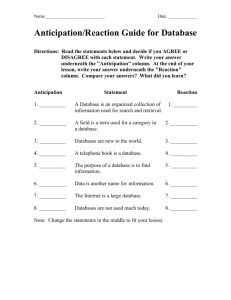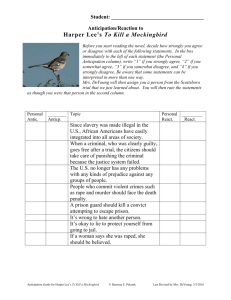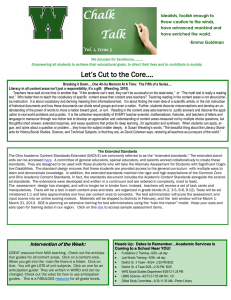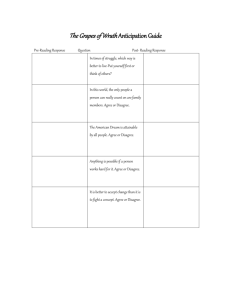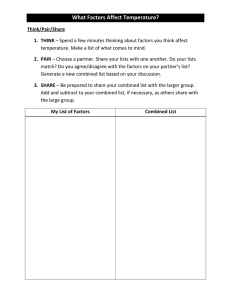Anticipation Guide
advertisement
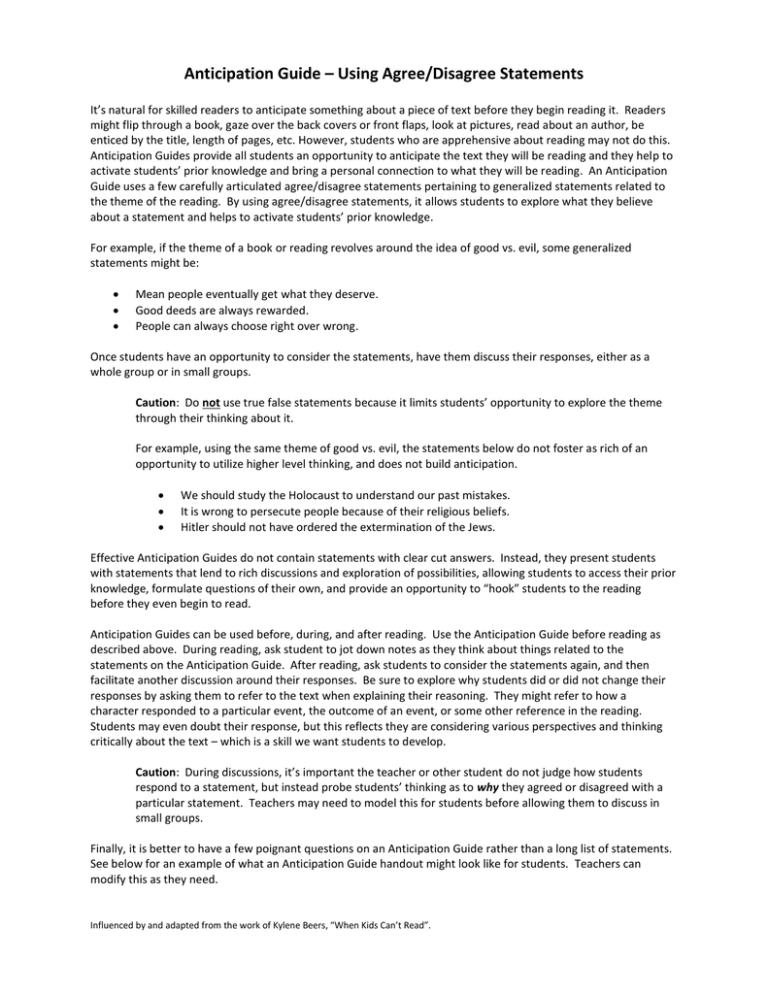
Anticipation Guide – Using Agree/Disagree Statements It’s natural for skilled readers to anticipate something about a piece of text before they begin reading it. Readers might flip through a book, gaze over the back covers or front flaps, look at pictures, read about an author, be enticed by the title, length of pages, etc. However, students who are apprehensive about reading may not do this. Anticipation Guides provide all students an opportunity to anticipate the text they will be reading and they help to activate students’ prior knowledge and bring a personal connection to what they will be reading. An Anticipation Guide uses a few carefully articulated agree/disagree statements pertaining to generalized statements related to the theme of the reading. By using agree/disagree statements, it allows students to explore what they believe about a statement and helps to activate students’ prior knowledge. For example, if the theme of a book or reading revolves around the idea of good vs. evil, some generalized statements might be: Mean people eventually get what they deserve. Good deeds are always rewarded. People can always choose right over wrong. Once students have an opportunity to consider the statements, have them discuss their responses, either as a whole group or in small groups. Caution: Do not use true false statements because it limits students’ opportunity to explore the theme through their thinking about it. For example, using the same theme of good vs. evil, the statements below do not foster as rich of an opportunity to utilize higher level thinking, and does not build anticipation. We should study the Holocaust to understand our past mistakes. It is wrong to persecute people because of their religious beliefs. Hitler should not have ordered the extermination of the Jews. Effective Anticipation Guides do not contain statements with clear cut answers. Instead, they present students with statements that lend to rich discussions and exploration of possibilities, allowing students to access their prior knowledge, formulate questions of their own, and provide an opportunity to “hook” students to the reading before they even begin to read. Anticipation Guides can be used before, during, and after reading. Use the Anticipation Guide before reading as described above. During reading, ask student to jot down notes as they think about things related to the statements on the Anticipation Guide. After reading, ask students to consider the statements again, and then facilitate another discussion around their responses. Be sure to explore why students did or did not change their responses by asking them to refer to the text when explaining their reasoning. They might refer to how a character responded to a particular event, the outcome of an event, or some other reference in the reading. Students may even doubt their response, but this reflects they are considering various perspectives and thinking critically about the text – which is a skill we want students to develop. Caution: During discussions, it’s important the teacher or other student do not judge how students respond to a statement, but instead probe students’ thinking as to why they agreed or disagreed with a particular statement. Teachers may need to model this for students before allowing them to discuss in small groups. Finally, it is better to have a few poignant questions on an Anticipation Guide rather than a long list of statements. See below for an example of what an Anticipation Guide handout might look like for students. Teachers can modify this as they need. Influenced by and adapted from the work of Kylene Beers, “When Kids Can’t Read”. Anticipation Guide – Do You Agree or Disagree? Part 1: In the Before Reading column, write “Agree” if you believe the statement in the middle, or write “Disagree” if you do not believe the statement. Jot down ideas that can support your view. Before Reading Ideas or evidence to support my view After Reading Ideas or evidence to support my view 1. Mean people eventually get what they deserve. 2. Good deeds are always rewarded. 3. People can always choose right over wrong. Part 2: As you read, jot down ideas that come to mind or events that happen in the reading that relate to the statements. Part 3: After you complete your reading, revisit the statements above. Consider what you learned from the reading and write “Agree” or “Disagree” in the After Reading column. Your views might have changed or they might have been strengthened as a result of the reading. Refer to information from the text that informed your After Reading responses, and write those ideas down in the appropriate column. Influenced by and adapted from the work of Kylene Beers, “When Kids Can’t Read”.
